Discourse, debate, and analysis
Cambridge Re:think Essay Competition 2024
Competition Opens: 15th January, 2024
Essay Submission Deadline: 10th May, 2024
Result Announcement: 20th June, 2024
Award Ceremony and Dinner at the University of Cambridge: 30th July, 2024
We welcome talented high school students from diverse educational settings worldwide to contribute their unique perspectives to the competition.
Entry to the competition is free.
About the Competition
The spirit of the Re:think essay competition is to encourage critical thinking and exploration of a wide range of thought-provoking and often controversial topics. The competition covers a diverse array of subjects, from historical and present issues to speculative future scenarios. Participants are invited to engage deeply with these topics, critically analysing their various facets and implications. It promotes intellectual exploration and encourages participants to challenge established norms and beliefs, presenting opportunities to envision alternative futures, consider the consequences of new technologies, and reevaluate longstanding traditions.
Ultimately, our aim is to create a platform for students and scholars to share their perspectives on pressing issues of the past and future, with the hope of broadening our collective understanding and generating innovative solutions to contemporary challenges. This year’s competition aims to underscore the importance of discourse, debate, and critical analysis in addressing complex societal issues in nine areas, including:
Religion and Politics
Political Science and Law
Linguistics
Environment
Sociology and Philosophy
Business and Investment
Public Health and Sustainability
Genetics
Biotechonology
Artificial Intelligence
Neuroengineering
2024 Essay Prompts
This year, the essay prompts are contributed by distinguished professors from Harvard, Brown, UC Berkeley, Cambridge, Oxford, and MIT.
Essay Guidelines and Judging Criteria
Review general guidelines, format guidelines, eligibility, judging criteria.
Awards and Award Ceremony
Award winners will be invited to attend the Award Ceremony and Dinner hosted at the King’s College, University of Cambridge. The Dinner is free of charge for select award recipients.
Registration and Submission
Register a participant account today and submit your essay before the deadline.
The Cambridge Re:think Essay Competition is guided by an esteemed Advisory Committee comprising distinguished academics and experts from elite universities worldwide. These committee members, drawn from prestigious institutions, such as Harvard, Cambridge, Oxford, and MIT, bring diverse expertise in various disciplines.
They play a pivotal role in shaping the competition, contributing their insights to curate the themes and framework. Their collective knowledge and scholarly guidance ensure the competition’s relevance, academic rigour, and intellectual depth, setting the stage for aspiring minds to engage with thought-provoking topics and ideas.
We are honoured to invite the following distinguished professors to contribute to this year’s competition.
The judging panel of the competition comprises leading researchers and professors from Harvard, MIT, Stanford, Cambridge, and Oxford, engaging in a strictly double blind review process.
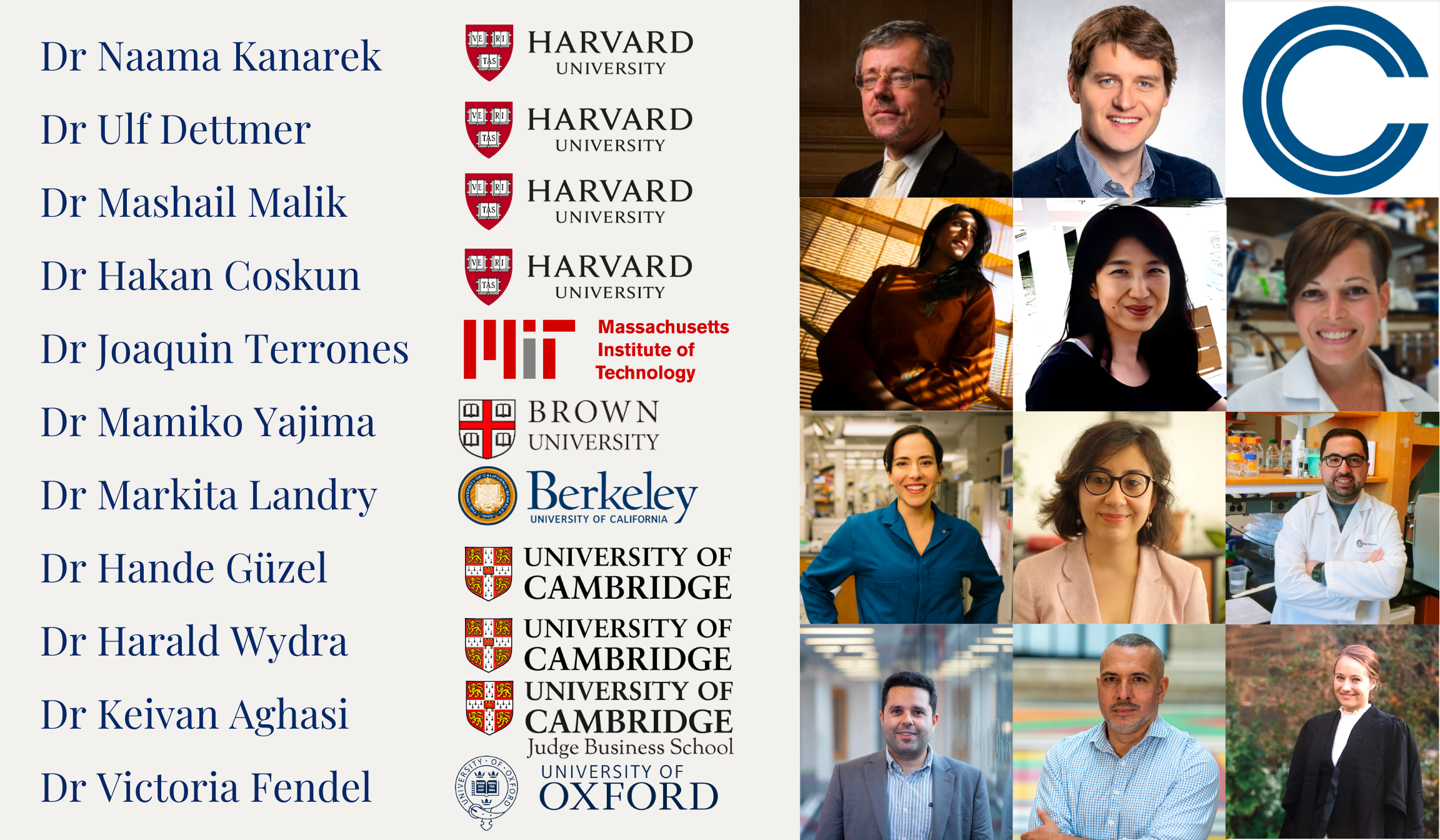
We are beyond excited to announce that multiple Nobel laureates have confirmed to attend and speak at this year’s ceremony on 30th July, 2024 .
They will each be delivering a keynote speech to the attendees. Some of them distinguished speakers will speak virtually, while others will attend and present in person and attend the Reception at Cambridge.
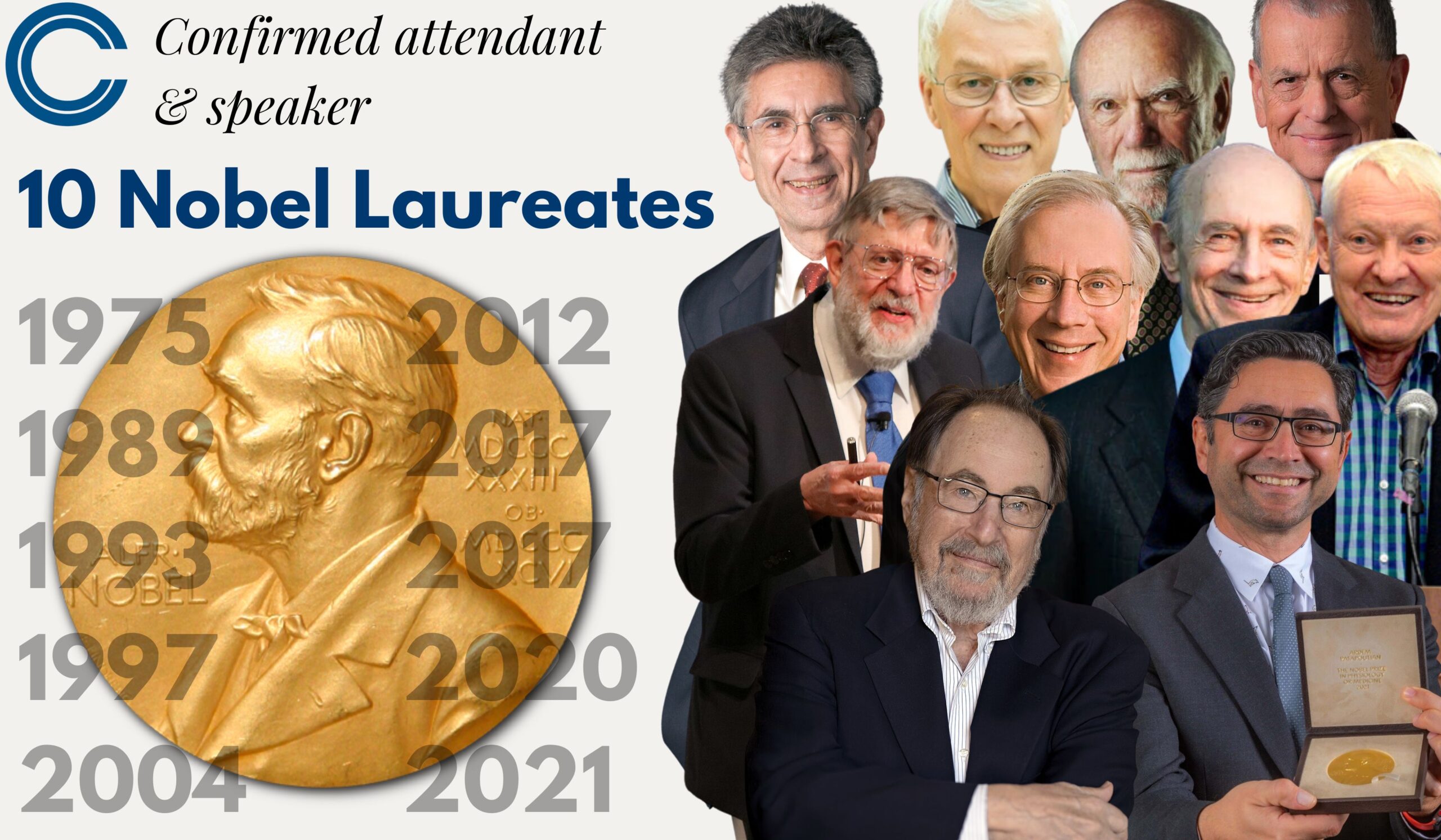
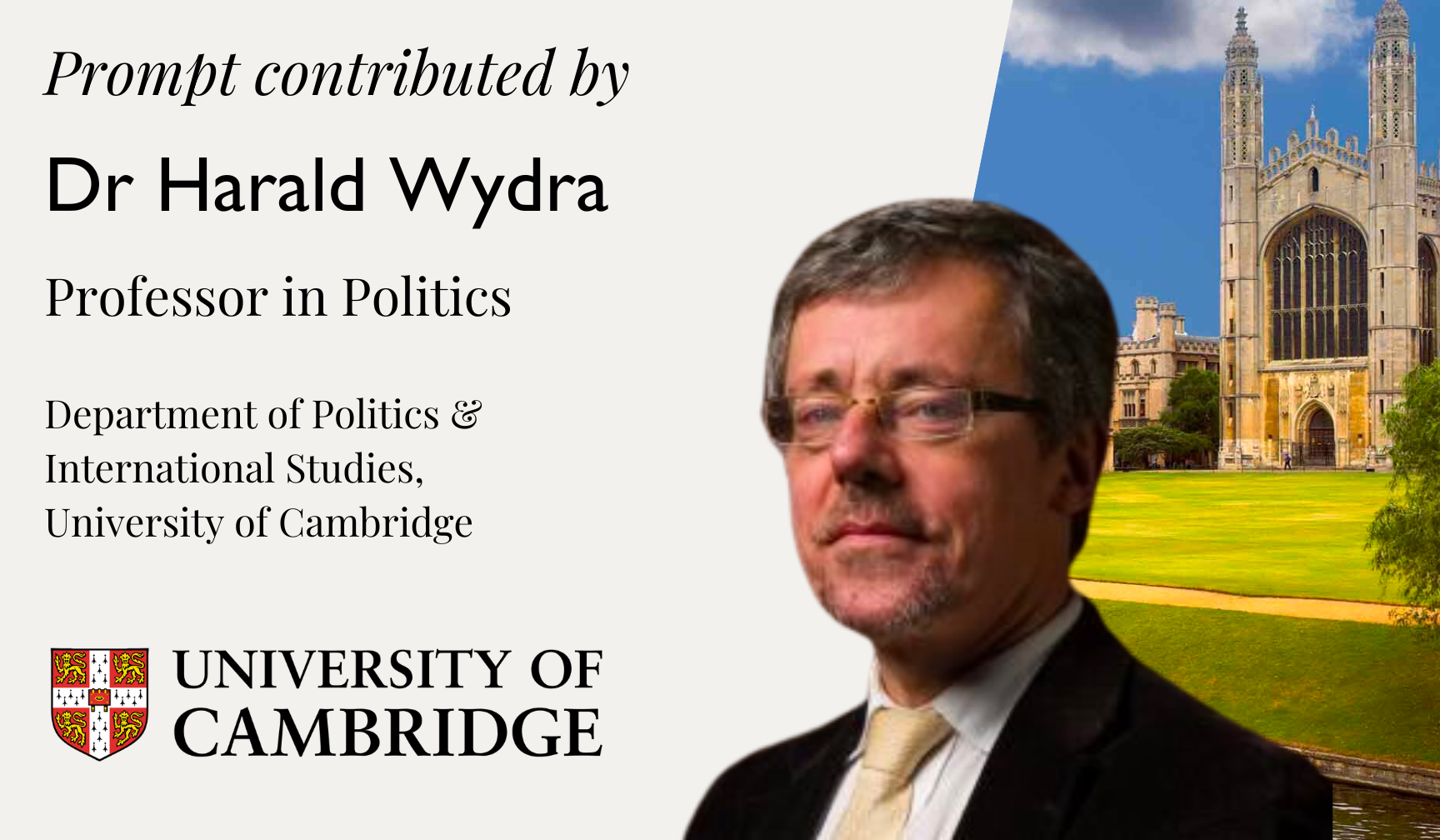
Religion and Politics
Why has religion remained a force in a secular world?
Professor Commentary:
Arguably, the developed world has become more secular in the last century or so. The influence of Christianity, e.g. has diminished and people’s life worlds are less shaped by faith and allegiance to Churches. Conversely, arguments have persisted that hold that we live in a post-secular world. After all, religion – be it in terms of faith, transcendence, or meaning – may be seen as an alternative to a disenchanted world ruled by entirely profane criteria such as economic rationality, progressivism, or science. Is the revival of religion a pale reminder of a by-gone past or does it provide sources of hope for the future?
‘Religion in the Public Sphere’ by Jürgen Habermas (European Journal of Philosophy, 2006)
In this paper, philosopher Jürgen Habermas discusses the limits of church-state separation, emphasizing the significant contribution of religion to public discourse when translated into publicly accessible reasons.
‘Public Religions in the Modern World’ by José Casanova (University Of Chicago Press, 1994)
Sociologist José Casanova explores the global emergence of public religion, analyzing case studies from Catholicism and Protestantism in Spain, Poland, Brazil, and the USA, challenging traditional theories of secularization.
‘The Power of Religion in the Public Sphere’ by Judith Butler, Jürgen Habermas, Charles Taylor, and Cornel West (Edited by Eduardo Mendieta and Jonathan VanAntwerpen, Columbia University Press, 2011)
This collection features dialogues by prominent intellectuals on the role of religion in the public sphere, examining various approaches and their impacts on cultural, social, and political debates.
‘Rethinking Secularism’ by Craig Calhoun, Mark Juergensmeyer, and Jonathan VanAntwerpen (Oxford University Press, 2011)
An interdisciplinary examination of secularism, this book challenges traditional views, highlighting the complex relationship between religion and secularism in contemporary global politics.
‘God is Back: How the Global Rise of Faith is Changing the World’ by John Micklethwait and Adrian Wooldridge (Penguin, 2010)
Micklethwait and Wooldridge argue for the coexistence of religion and modernity, suggesting that religious beliefs can contribute to a more open, tolerant, and peaceful modern world.
‘Multiculturalism’ by Tariq Modood (Polity Press, 2013)
Sociologist Tariq Modood emphasizes the importance of multiculturalism in integrating diverse identities, particularly in post-immigration contexts, and its role in shaping democratic citizenship.
‘God’s Agents: Biblical Publicity in Contemporary England’ by Matthew Engelke (University of California Press, 2013)
In this ethnographic study, Matthew Engelke explores how a group in England seeks to expand the role of religion in the public sphere, challenging perceptions of religion in post-secular England.

Political Science and Law
What are the arguments for and against prison abolitionism?
Professor Commentary:
The debate on prison abolitionism challenges the effectiveness and morality of the criminal justice system. On the one hand, mass incarceration has a disproportionate impact on marginalized groups and is argued to contribute to maintaining and deepening existing inequalities. On the other, some members of these communities themselves have — and continue to — advocate for “tough on crime” policies. Are prisons merely punitive, or can they effectively address the root causes of crime? Should we abolish prisons, or reimagine and restructure them towards restorative justice? Thinking through these questions requires not only addressing our stock of empirical evidence on the impact of prisons, but also being careful to be explicit about what we hope to achieve in a normatively just future.
‘All About Love’ by Bell Hooks
An exploration of love as a transformative practice and its pivotal role within an abolitionist framework.
‘Body and Soul: The Black Panther Party and the Fight Against Medical Discrimination’ by Alondra Nelson
Chronicles the Black Panther Party’s initiatives in healthcare, offering insights into community service and resistance against medical racism.
‘Golden Gulag: Prisons, Surplus, Crisis, and Opposition in Globalizing California’ by Ruth Wilson Gilmore
Examines the origins of California’s prison system and the societal implications of mass incarceration, revealing the ties between financial wealth and prison labor.
‘Freedom Is a Constant Struggle’ by Angela Y. Davis
Explores interconnected struggles against state violence globally, highlighting the interconnectedness of resistance movements.
‘Blood in My Eye’ by George Jackson
A reflection on revolutionary readings, emphasizing the need for solidarity and learning with and from the people.
‘Pedagogy Of The Oppressed’ by Paulo Freire
Emphasizes learning alongside oppressed communities, rejecting a top-down approach in favor of solidarity and mutual learning.
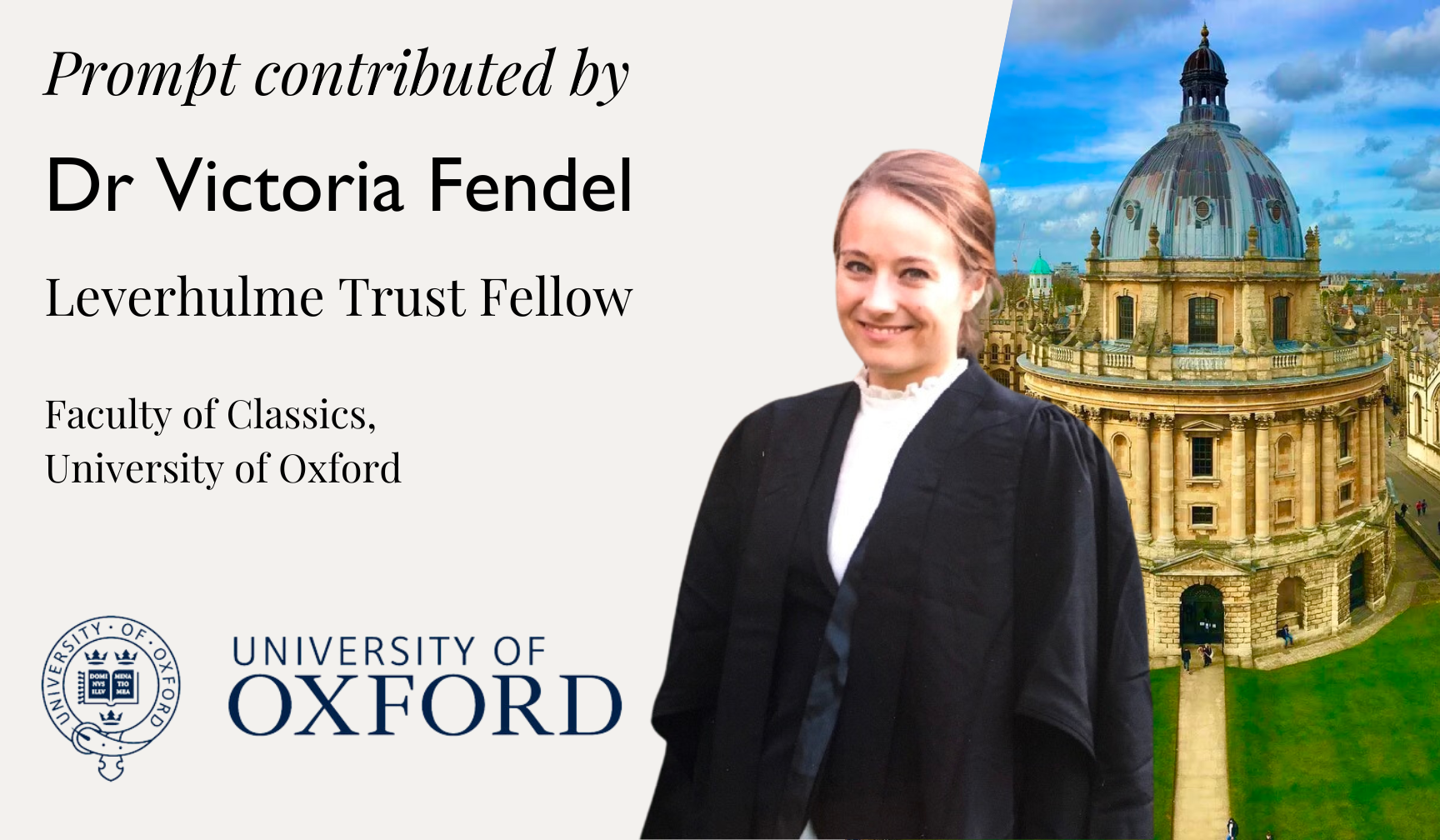
Linguistics
In school we are taught to speak and write “properly”—but what does this mean? Does the idea of a “proper language” play a role, as some have suggested, in maintaining class distinctions and oppressing marginalized groups? If so, should we abandon the idea of linguistic “propriety”, or somehow reconceptualize it?
Professor Commentary:
While the idea of this essay title clearly ties in with research that is ongoing an very important, not least in the UK (see https://accentbiasbritain.org/), the choice of words in the question quite leading (e.g. ‘oppressing’). The question does not seem to take into consideration the large area of sociolinguistics which is very active in disseminating their findings to the general public (see e.g. Multilingualism and Identity, CUP 2022). Finally, it is rarely a good idea to practise damnatio memoriae as it were and ‘abandon’ something but this should rather be about debunking a myth. Perhaps we could rather ask: How can we celebrate the diversity in the way we speak and how can we proactively break down barriers and move from a paradigm of categories to the idea of a continuum or perhaps far more complex a model, and from the pervasive question ‘where are you from?’ to the future-oriented question ‘where are you going?’.
‘An Introduction to Sociolinguistics’ by Ronald Wardhaugh (1986)
This book provides a comprehensive introduction to the field of sociolinguistics, delving into the study of language within its social and cultural contexts. It covers various aspects, from language variations to multilingualism, offering insights into the societal influences on language use.
‘Cultish: The Language of Fanaticism’ by Amanda Montell (2021)
Exploring the intricate language and communication patterns within fanaticism and cult-like behavior, Montell navigates through the nuanced ways in which language constructs and perpetuates fanatic ideologies.
‘Sociolinguistics: An Introduction to Language and Society’ by Peter Trudgill (1974)
In this foundational text, Trudgill introduces readers to the study of language usage in societal settings. It delves into language variations, societal influences on language, and the relationship between language and society.
‘Sociolinguistic Patterns’ by William Labov (1973)
Labov’s work explores the intricate patterns and correlations in sociolinguistics, shedding light on the interplay between language use and societal factors.
‘English with an Accent: Language, Ideology and Discrimination in the United States’ by Rosina Lippi-Green (1997)
Investigating language ideologies and discrimination in the United States, Lippi-Green explores the societal biases related to accents and language variations, offering a critical view of language-based discrimination.
‘Social Linguistics and Literacies: Ideology in Discourses’ by James Paul Gee
Gee delves into the complexities of language ideologies, literacy, and discourse, highlighting how ideologies are embedded in language use and literacy practices in society.
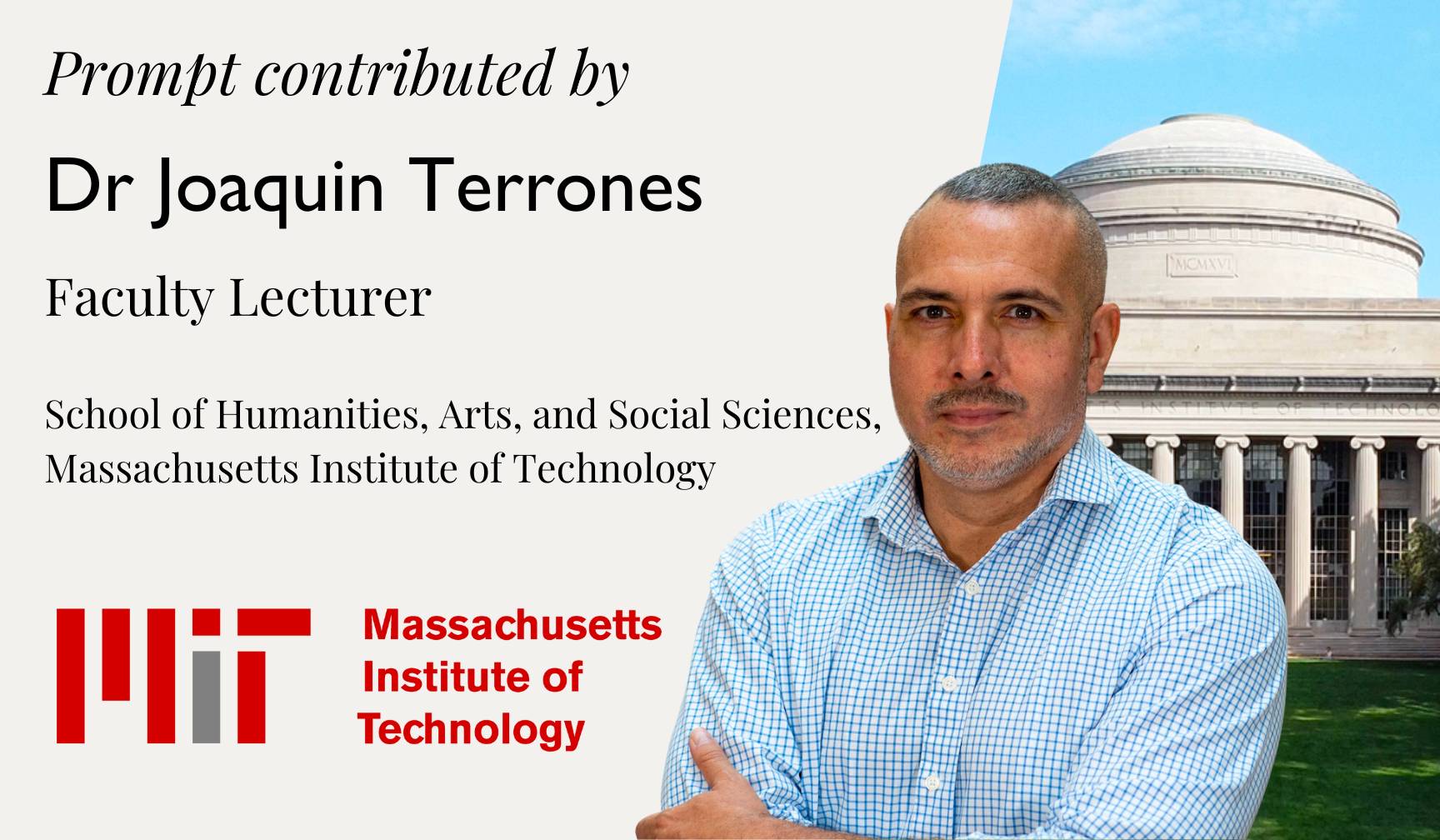
Environment
Does the principle of ‘reduce, reuse, recycle’ actually contribute to reducing global waste, or is it just a myth that distracts from the real issues of overproduction and overconsumption? Should developing countries be held to the same environmental standards as developed countries, despite their different stages of industrialization and economic needs?
Professor Commentary:
From their onset, the environmental crises that we currently face have been closely linked to capitalism and the inequalities it generates. Can we address one without the other? As you begin to reflect on these issues, consider historical differences and current disparities between developed and developing countries. Which parts of the world have consumed the most resources and produced the most waste? Who suffers the most from climate change and other environmental catastrophes? Finally, it might prove useful to assess the framework of responsibility—personal or national—that we often apply to environmental issues. What are its benefits and limitations? Are there other ways to frame the issue?
‘The Colors of Nature: Culture, Identity, and the Natural World’ by Alison H. Deming and Lauret E. Savoy
This anthology examines the relationship between culture and nature, showcasing diverse perspectives on environmental justice and the natural world through essays by writers from various backgrounds.
‘Toxic Communities: Environmental Racism, Industrial Pollution, and Residential Mobility’ by Dorceta E. Taylor
Investigating the intersection of environmental toxins and racial discrimination in the U.S., this book highlights the struggles of marginalized communities against industrial pollution and their fight for equitable environmental protections.
‘Braiding Sweetgrass: Indigenous Wisdom, Scientific Knowledge, and the Teachings of Plants’ by Robin Wall Kimmerer
Combining Indigenous knowledge with scientific insight, Kimmerer offers a unique perspective on the interconnectedness of humans and the natural world, emphasizing mutual respect and learning.
‘Environmental Justice: Concepts, Evidence and Politics’ Edited by Gordon Walker
This comprehensive collection provides an in-depth look at the concept of environmental justice, featuring global case studies that illustrate various forms of environmental and societal inequities.
‘A Terrible Thing to Waste: Environmental Racism and Its Assault on the American Mind’ by Harriet A. Washington
Washington delves into how environmental racism, particularly in the form of toxic exposure, disproportionately impacts cognitive development in communities of color, contributing to wider systemic inequalities.
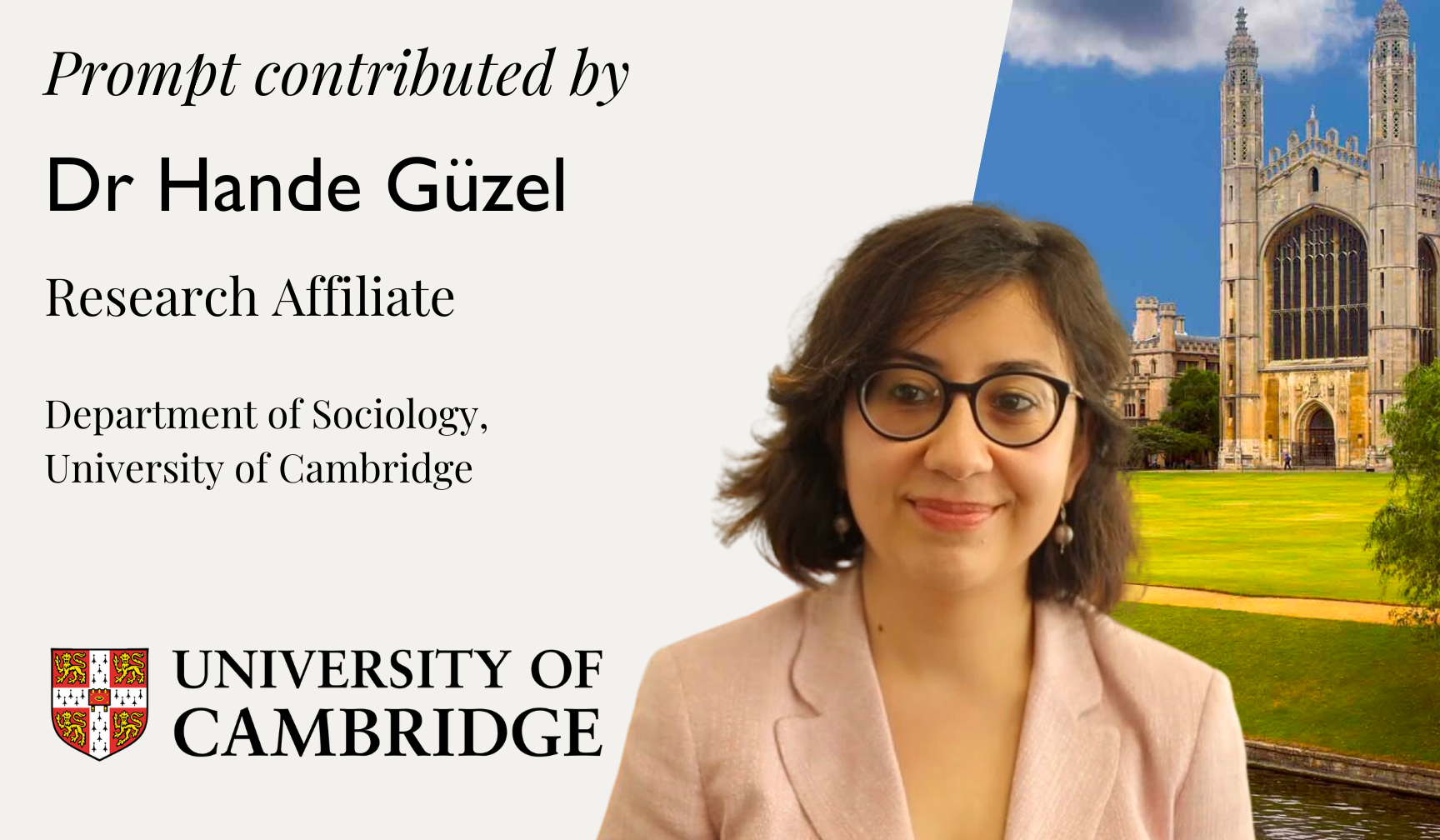
Sociology and Philosophy
Artificial intelligence is increasingly becoming a part of our lives: from Snapchat filters to deepfakes, it is becoming easier than ever for our images to be manipulated by ourselves and others alike in myriad ways.
How will AI change our understanding of beauty? How does the prevalence of AI in our lives cut across our understanding of beauty? What sorts of ethical and political consequences will this have?
Professor Commentary:
An essay addressing this question should consider how changes in our understanding of beauty might intersect with social categories such as gender, ‘race’, class, age, or disability/able-bodiedness. There is a possibility that inequalities are deepened and strengthened, or on the contrary weakened via the involvement of AI in our lives. This becomes especially pivotal when marginalised individuals or communities are in the picture. Hence, essays should discuss the relationship between AI and inequalities within the framework of the aforementioned social categories within the scope of beauty.
‘Life 3.0: Being Human in the Age of Artificial Intelligence’ by Max Tegmark
Traces the historical arc of AI, exploring its societal, philosophical, and ethical implications, prompting readers to contemplate the intricate interplay between technology and human existence.
‘The Alignment Problem: Machine Learning and Human Values’ by Brian Christian
Explores aligning AI systems with human values, delving into ethical dilemmas and the potential for unintended consequences, advocating for proactive approaches in AI development.
‘Human Compatible: Artificial Intelligence and the Problem of Control’ by Stuart Russell
Examines ensuring safe and beneficial AI by aligning its goals with human values, emphasizing responsible AI development to avoid unintended consequences.
‘Artificial Intelligence: A Guide for Thinking Humans’ by Melanie Mitchell
Offers a comprehensive yet accessible exploration of AI’s history, capabilities, and limitations, navigating complex concepts and emphasizing the importance of ethical considerations.
‘Hello World: Being Human in the Age of Algorithms’ by Hannah Fry
Examines the influence of algorithms on modern society across various fields, prompting reflection on the balance between human decision-making and algorithms.
‘Four Futures’ by Peter Frase
Explores potential future scenarios shaped by automation, climate change, and sociopolitical inequality, highlighting the transformative impact of AI and the importance of human choices and values in shaping our world.
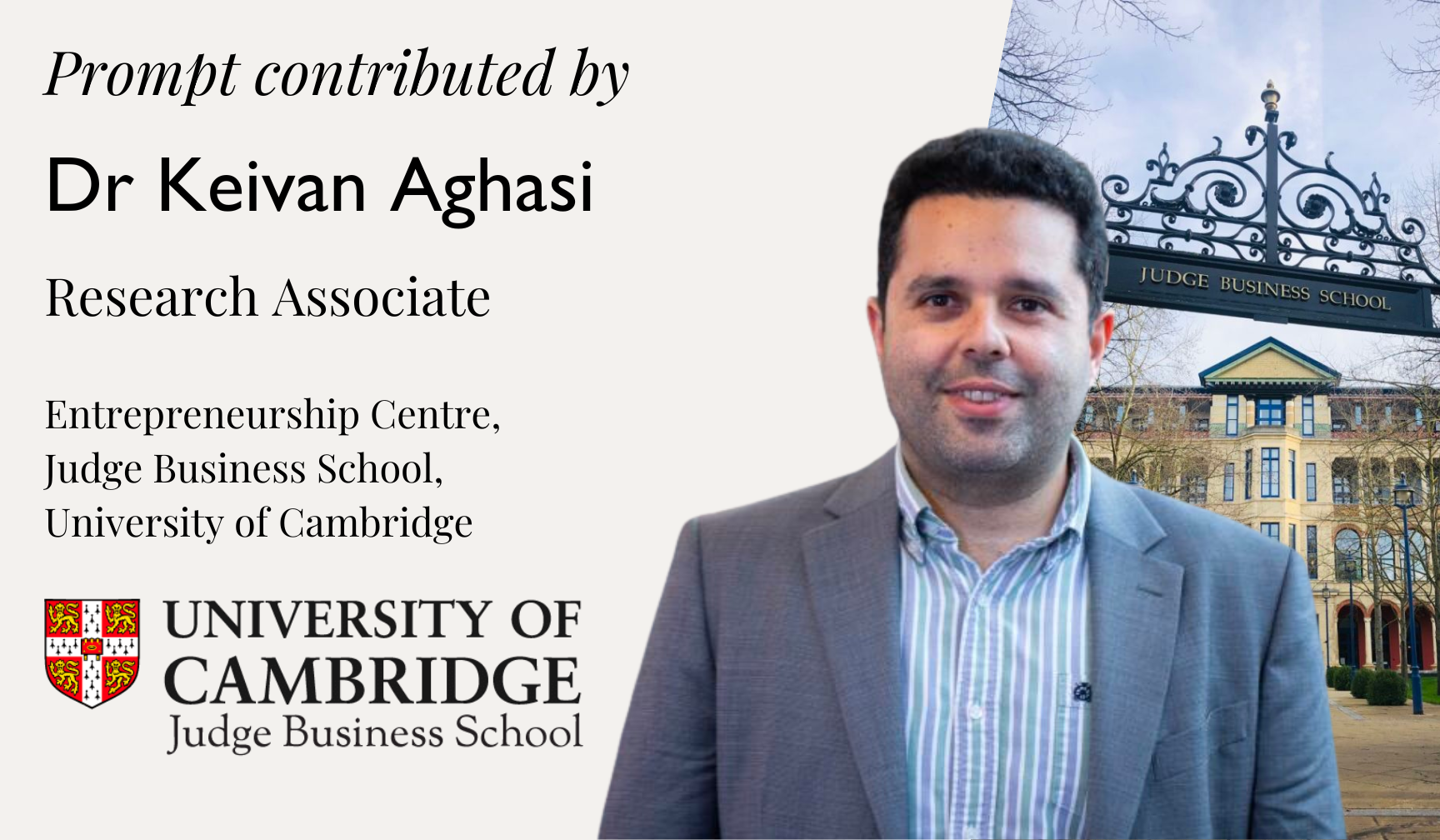
Business and Investment
Do overvalued startups with unsustainable business models negatively affect competition and the overall health of the economy? Or are they rather just the regrettable, but unavoidable “bad apples” in a financial and economic system that is rational as a whole?
Professor Commentary:
High valuation and high-end salaries seem attractive but are they harmful for start-ups, founders, employees, and society? The pressure for overvalued start-ups to outperform the competitors in the market usually leads to mismanagement and bad decisions by the founders and results in significant financial losses for the investors. Also, such pressure negatively impacts the well-being of the employees, and oftentimes times they get burned out. Regrettably, this pressure sometimes encourages few founders to justify the means and undertake unethical approaches to outperform in the market.
‘Our Lives in Their Portfolios’ by Brett Christophers
Banks have taken a backseat since the global financial crisis over a decade ago. Today, our new financial masters are asset managers, like Blackstone and BlackRock. And they don’t just own financial assets; they possess significant social and economic power.
‘Democratizing Finance’ Edited by Fred Block and Robert Hockett
Argues for an entirely different financial system that benefits the collective instead of empowering the few, reimagining the structure and purpose of finance.
‘Buying Time’ by Wolfgang Streeck
Explores the ongoing financial and economic crisis, examining its complexity and the lack of understanding surrounding it.
‘Rentier Capitalism’ by Brett Christophers
Provides a critique of early-21st-century capitalism, focusing on the concentration of wealth and power.
‘The Morals of the Market’ by Jessica Whyte
Explores the relationship between human rights and neoliberalism, uncovering their place in developing moral frameworks.
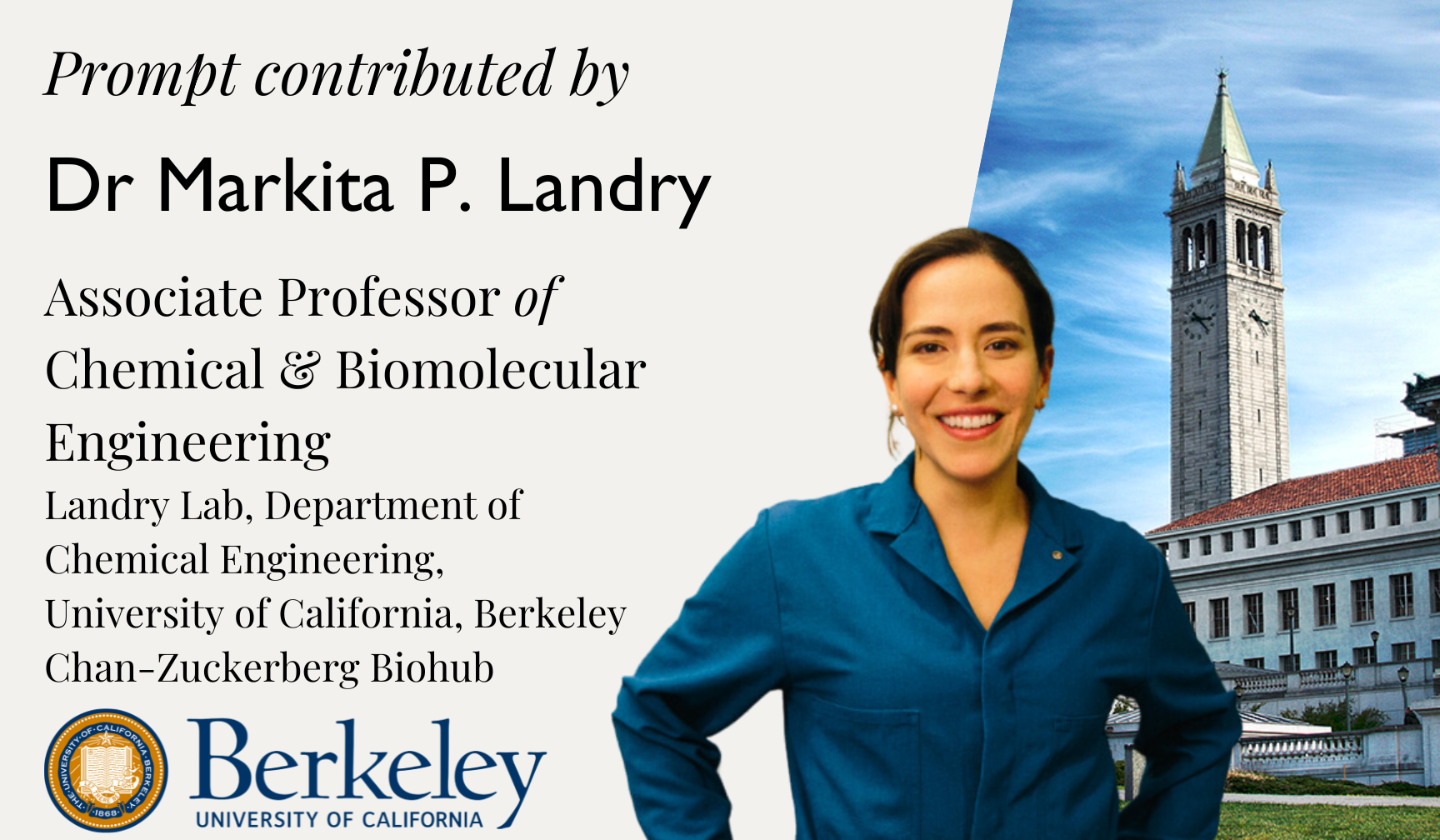
Public Health and Sustainability
Discuss the conflict of sustainability, agriculture, and human health.
Professor Commentary:
Global climate change and the extreme weather patterns it induces is compromising the quality and availability of land on which we can grow food. Furthermore, the strong backlash against genetically modified foods (GMOs) slows progress in bioengineering resilient crops. Do the benefits of implementing new genome editing technologies for agriculture outweigh the societal backlash of advancing technologies and bioengineered crops? If regulatory and societal backlash slow progress in crop genetic engineering, what populations are most affected by the resulting malnutrition and food scarcity effects?
‘The Gene: An Intimate History’ by Siddhartha Mukherjee
Explores the history of gene science, examining debates about gene resequencing, intertwined with family experiences and contributions of key scientists and philosophers.
‘A Brief History of Everyone Who Ever Lived’ by Adam Rutherford
Reveals insights from genetics, shattering beliefs about heritage and identities by unraveling the human genome and its historical implications.
‘The Social Life of DNA’ by Alondra Nelson
Examines genetic genealogy’s impact on issues related to race, exploring uses in reconciling slavery’s aftermath, establishing ties with ancestral homelands, and more.
‘The Code Breaker: Jennifer Doudna, Gene Editing, and the Future of the Human Race’ by Walter Isaacson
Profiles the Nobel Prize-winning scientist Doudna, exploring her career and the revolutionary impact of CRISPR technology on disease treatment.
‘Gene Machine’ by Venki Ramakrishnan
Details the race for understanding the ribosome’s structure, a fundamental discovery that could revolutionize antibiotic development and advance knowledge of life.
‘DNA: The Story of the Genetic Revolution’ by James D. Watson
Charts the scientific journey from the double helix discovery to modern controversies and emerging fields like personal genomics and cancer research.
‘The Making of the Fittest’ by Sean B. Carroll
Discusses DNA’s role in evolution, presenting genetic evidence supporting the theory of evolution and its significance in shaping species.
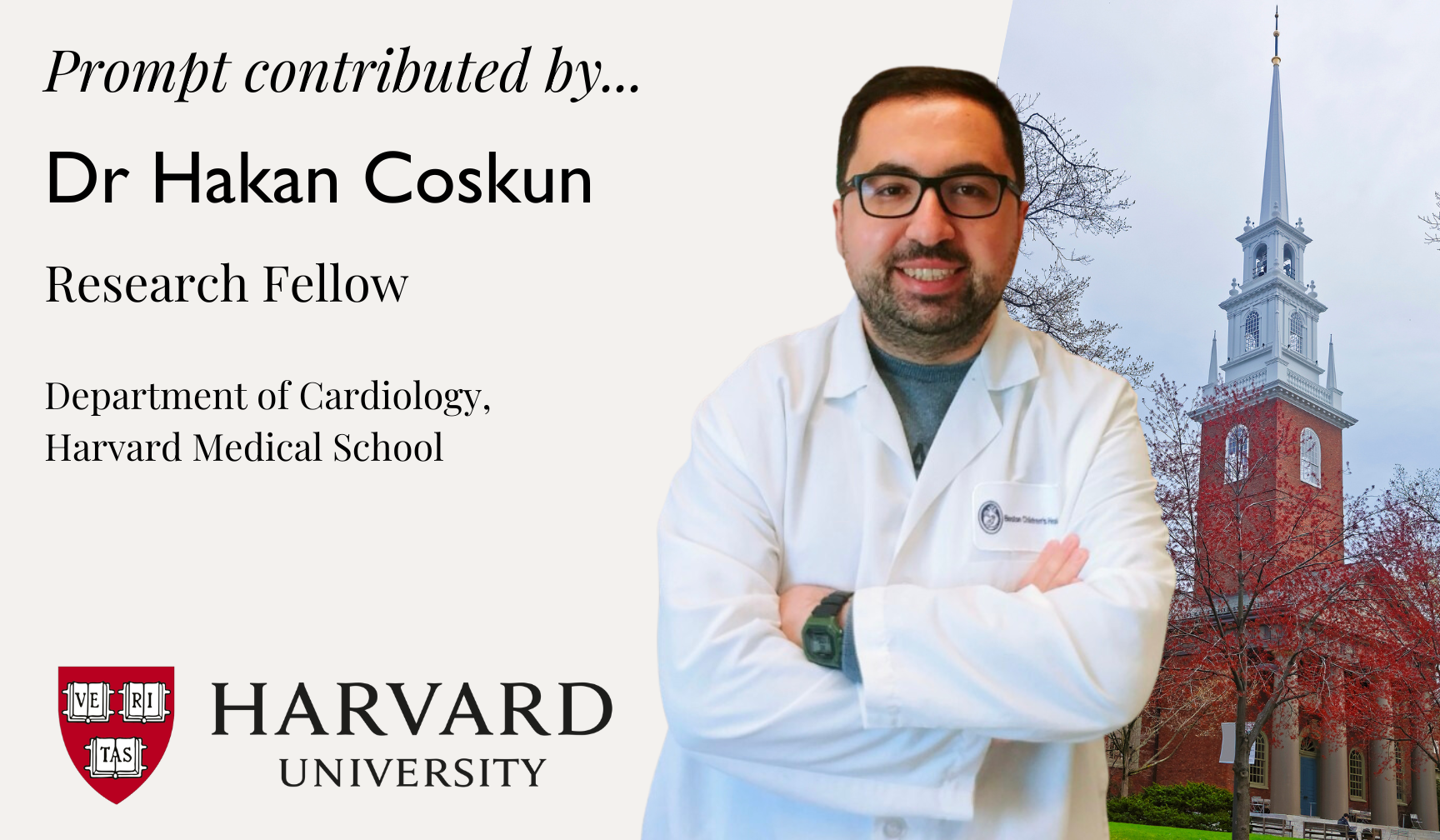
Genetics
Gene therapy is a medical approach that treats or prevents disease by correcting the underlying genetic problem. Is gene therapy better than traditional medicines? What are the pros and cons of using gene therapy as a medicine? Is gene therapy justifiable?
Professor Commentary:
Especially after Covid-19 mRNA vaccines, gene therapy is getting more and more interesting approach to cure. That’s why that could be interesting to think about. I believe that students will enjoy and learn a lot while they are investigating this topic.
‘The Gene: An Intimate History’ by Siddhartha Mukherjee
Explores the history of gene science, examining debates about gene resequencing, intertwined with family experiences and contributions of key scientists and philosophers.
‘A Brief History of Everyone Who Ever Lived’ by Adam Rutherford
Reveals insights from genetics, shattering beliefs about heritage and identities by unraveling the human genome and its historical implications.
‘The Social Life of DNA’ by Alondra Nelson
Examines genetic genealogy’s impact on issues related to race, exploring uses in reconciling slavery’s aftermath, establishing ties with ancestral homelands, and more.
‘The Code Breaker: Jennifer Doudna, Gene Editing, and the Future of the Human Race’ by Walter Isaacson
Profiles the Nobel Prize-winning scientist Doudna, exploring her career and the revolutionary impact of CRISPR technology on disease treatment.
‘Gene Machine’ by Venki Ramakrishnan
Details the race for understanding the ribosome’s structure, a fundamental discovery that could revolutionize antibiotic development and advance knowledge of life.
‘DNA: The Story of the Genetic Revolution’ by James D. Watson
Charts the scientific journey from the double helix discovery to modern controversies and emerging fields like personal genomics and cancer research.
‘The Making of the Fittest’ by Sean B. Carroll
Discusses DNA’s role in evolution, presenting genetic evidence supporting the theory of evolution and its significance in shaping species.

Biotechonology
In the near future, there’s a possibility of utilizing cells from various parts of the body to create these germ cells, also known as gametes. This innovative process, called in vitro gametogenesis (IVG), opens up the potential for producing babies using cells sourced from muscle, liver, or blood. Scientists can construct embryos, eggs, and sperm from induced pluripotent stem cells. This technology may open up many applications since, in theory, anyone can make biological babies or clones independent of their gender or age using their somatic cells. Ethical regulations have so far been implemented to limit the study.
Should we move forward with vitro gametogenesis (IVG) further?
Professor Commentary:
This technology may allow, for example, a gay couple or a couple at any age to have their biological babies. It may also free young women from social pressure to give birth, which could fundamentally change our culture in society. What type of world will we face in the end if this technology is unleashed into the world? What types of regulations are critical for human beings to make appropriate use of this technology?
‘The Handmaid’s Tale’ by Margaret Atwood
Atwood’s enduring dystopia remains fresh, drawing parallels to real-world misogyny and offering inspiration to authors exploring feminist dystopias.
‘The Farm’ by Joanne Ramos (Penguin Random House)
Ramos delves into the exploitation of surrogates, particularly women of color, in a thought-provoking narrative that navigates ethical dilemmas within surrogacy.
‘Biotechnology in Context’ by Gale (Gale Virtual Reference Library Ebook, 2012)
An introductory encyclopedia encompassing various articles on reproductive technology, offering historical context, defining key terms, analyzing impacts and issues, and presenting a bibliography connecting readers to relevant research sources.
‘Science and Political Controversy: A Reference Handbook’ by David Newton (EBL E-book, 2014)
This reference handbook explores the intersection of science and politics, including reproductive technologies. It provides background information on the topics and offers resources for further research through an indexed format.
‘Women and Health’ edited by Marlene B. Goldman, Rebecca Troisi, Kathryn M. Rexrode (EBL E-book, 2012)
Addressing health concerns across women’s lifespans, this comprehensive reference includes Chapter 16, focusing on issues related to abortion, providing insights and discussions surrounding this sensitive topic.
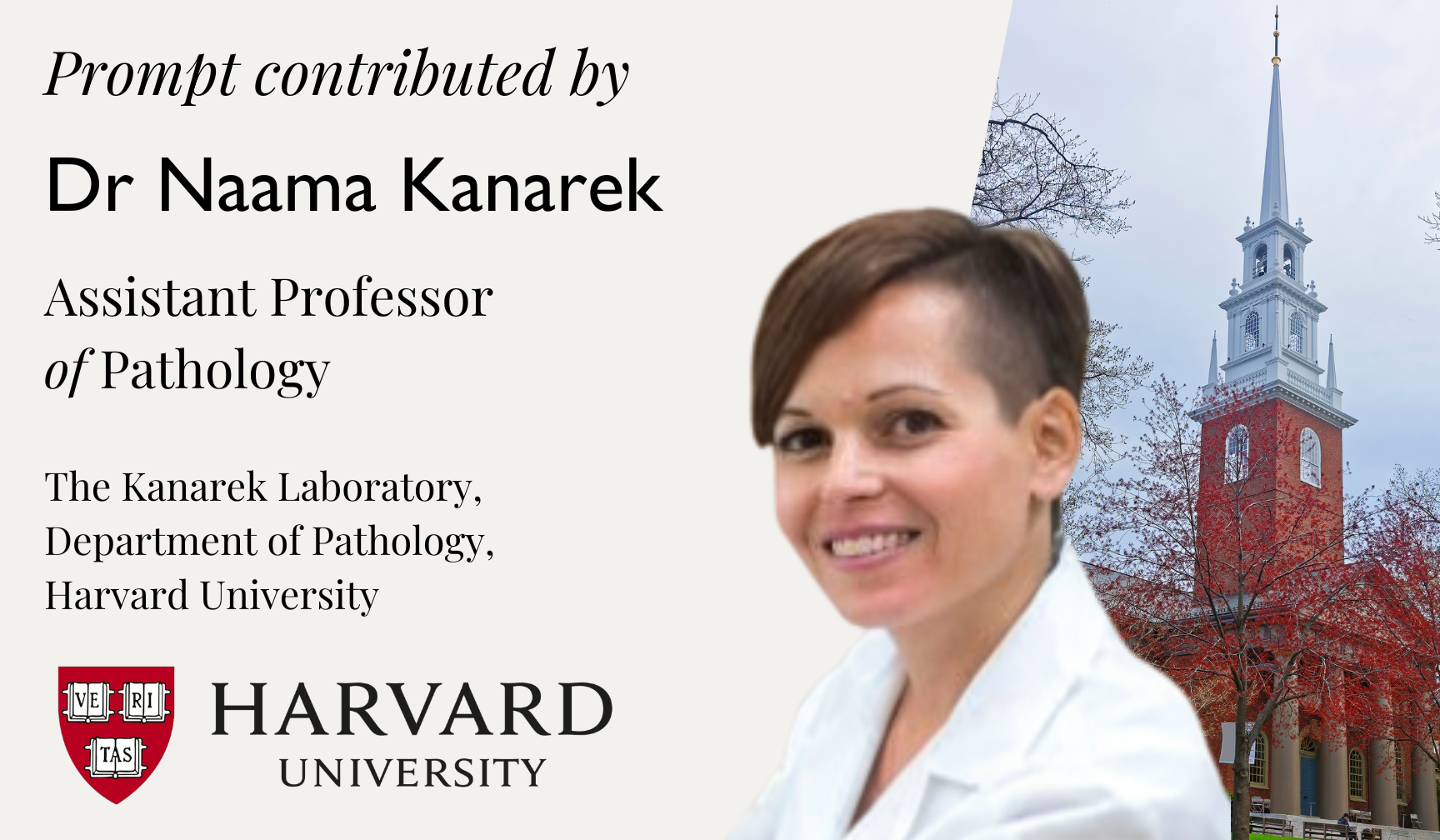
Artificial Intelligence
Is AI-driven data mining serving us better or is it overriding our privacy?
Professor Commentary:
In a world flooded with data regarding our life routine, day-to-day choices, and purchasing preferences, we should consider how this data can be used and by whom. Companies use this data to sharpen their marketing targeting, that can be very helpful for both the companies and the consumers. Governments can use this data to identify and track potential threats to society, that can save lives and protect society from violent individuals or groups. But how much are we willing to expose of our private lives? And what if some companies misuse the data and adapt prices or create pseudo-monopoly with overly aggressive targeting of consumers? What if some governments use the same information to track citizens that oppose the government and compromise freedom of civilians? How can we draw a line between proper data mining and misuse of the same data? The answer is probably multifaceted. First, the type of collected data matters, for example: opinions expressed on social media differs from monitoring online purchasing habits. While the first is an active choice of an individual, who is usually aware of the public nature of the platforms used, the latter is not often an aspect of our online activity that we are acutely aware of. Second, the level of transparency in collecting the data matters. We all check the box of the “terms and conditions”, but often the privacy terms are buried in several pages-long small print that is easy to overlook. It is important to demand more warnings and privacy notices from sites that monitor, record, and sometimes sell our data. Which brings me to the third point of the discussion regarding legitimacy and risks in high throughput data curation, and that is the potential of selling or leaking of the data to a secondary entity that might be nefarious, or just not aligned with the interests of the individual. This is an important point because it highlights the responsibility of the entities that acquire and record the personal data, and their commitment to the well-being of the users. Together, these points place a shared responsibility on each of us, as internet users and on the companies / institutes that acquire the data. While internet users should be aware of the public nature of their actions online – from social media activity to simple online purchasing, Data acquisition entities should inform the users what type of data they collect, to what end, and who might see and process the data.
‘1984’ by George Orwell
A dystopian masterpiece portraying a society devoid of privacy, intimacy, and humanity, serving as a cautionary tale against the perils of fascism and a crucial read for democracy’s understanding.
‘Uncanny Valley’ by Anna Wiener
A captivating memoir delving into life in Silicon Valley, shedding light on the culture shaped by tech giants, unveiling the magnitude of data collection by big firms, and its potential misuse.
‘The Age of Surveillance Capitalism: The Fight for a Human Future at the New Frontier of Power’ by Shoshana Zuboff
An essential exploration detailing how the erosion of privacy intertwines with the modern economy, highlighting the transformation of information into currency and illuminating the normalization of mass data collection.
‘Privacy and Freedom’ by Alan F. Westin
A foundational study from the late 1960s, examining privacy in America during a crucial historical moment, offering comprehensive insights into the changes and threats to privacy, making it a pivotal text in the field.
‘No Place to Hide: Edward Snowden, the NSA, and the U.S. Surveillance State’ by Glenn Greenwald
A revealing account of NSA contractor Edward Snowden’s whistleblowing, exposing illegal surveillance practices by the U.S. government and triggering significant discussions about American privacy and surveillance’s future.

Neuroengineering
Breaking down the boundaries between humans and machine. In a sense, some of us can already be considered to be human-smartphone hybrids. Researchers and the tech industry are developing better and better approaches for breaking down the boundaries between humans and machines.
Will we become superhuman and immortal – and do we want to?
Professor Commentary:
In a number of Parkinson‘s disease patients, the implantation of electrodes in certain parts of the brain can mitigate the movement problems (“deep-brain stimulation”). Wouldn’t it be amazing to also restore the cognitive function of dementia patients by connecting the brain with a computer? And in daily life, just imagine you could simply “upload” a new language or advanced math skills to your brain. And will it one day become possible to “download” parts of our personality to a device, preserving it towards some kind of virtual immortality? Where are the limits – technically and ethically?
‘The Denial of Death’ by Ernest Becker
A profound work in social anthropology exploring human culture as a reaction to the inescapable fact of mortality, offering insights into the neurotic aspects of human behavior and presenting an unsettling disquisition on the inherent peculiarity of human nature.
‘The Singularity is Near: When Humans Transcend Biology’ by Ray Kurzweil
Kurzweil’s monumental work is a fusion of religious mysticism and technological futurism, envisioning a future convergence known as the Singularity, where AI achieves such supremacy that humans merge with technology, becoming immortal beings of infinite intelligence and capability.
‘Technics and Civilization’ by Lewis Mumford
Mumford’s 1934 polemic foresaw the mechanization of human life, contending that the machine age commenced when humans began treating each other as machines, offering a prescient critique of the mechanization of human existence.
‘A Cyborg Manifesto’ by Donna Haraway
Haraway’s provocative 1984 polemic repurposes the sci-fi concept of the cyborg for feminist discourse, depicting it as a postmodern collective and personal self, advocating for a redefined feminist identity, and challenging the male-dominated narrative of technology and humanity.
‘Zero K’ by Don DeLillo
DeLillo’s novel delves into the story of an aging billionaire seeking cryogenic preservation for himself and his dying wife, reflecting echoes of the transhumanist movement and the Silicon Valley obsession with transformative technology, encapsulating the broader paradoxes of modern culture’s relationship with technology and the desire for eternal life.
General Guidelines
No Entry Fee: There are no fees required to enter this essay competition. It is open to all eligible participants without any cost.
Academic Integrity: This essay competition upholds the highest level of academic integrity. Participants are expected to adhere strictly to these standards.
Original Work: Each essay must be the original work of the participant. The use of AI tools for assistance in writing is strictly prohibited. Essays must reflect the participant’s own ideas, analysis, and expression.
Plagiarism: Plagiarism is not tolerated in any form. Any essay found to involve plagiarism will be immediately disqualified from the competition. Participants must ensure that all sources are appropriately cited and that the essay is composed of their unique thoughts and words.
Sole authorship required: The essay you submit must be entirely your own work. Collaboration with others or co-authorship is not permitted. You are allowed to seek advice and discuss topics with others, but no one else should be involved in the actual writing of the essay. It must be your own work.
One Essay Submission & Single Question Focus: Participants are allowed to submit only one essay. Furthermore, each essay must address only one of the provided essay prompts.
Referee Contact: Participants are required to submit the email of an adult academic reference (such as your school teacher or counsellor). In the event that further academic verification is needed, we will reach out to the referee for more information. The referee will also receive the outcome of the competition.
Eligibility
- Students from around the world are welcome to participate.
- The Re: think essay competition is open to students aged 14 to 18 years who have not yet commenced undergraduate studies.
Format Guidelines
- Please ensure that your essay does not exceed 2000 words; this word count excludes footnotes and bibliography.
- Please use a consistent font format and set the line spacing to 1.5 space.
- All submissions will be routed through plagiarism and an AI checker. As such, we expect all submissions to be properly cited. The format of citation for this competition is MLA 8, the 8th edition of the Modern Language Association style. To find out more about MLA 8, please refer to this guide here.
- The essay must be submitted in PDF format. In the PDF document, please remove your name, affiliation, or any personal information to ensure a blind review. You will be asked to provide personal information in the submission system.
Judging Criteria
All submissions will be reviewed by a judging panel with scholars drawn from prestigious institutions, including Harvard, Cambridge, Oxford, and MIT.
Double-Blind Review: Double-blind essay review is a process used in academic or scholarly publishing where both the reviewers and the authors are anonymous to each other. In this system, the identities of the authors are kept confidential from the reviewers, and vice versa. This approach aims to minimise biases that could arise from knowledge of the author’s identity, academic affiliation, or reputation.
Original and interesting ideas: The competition aims to motivate students to deeply reassess and contemplate the interconnections of science, society, and the global environment. Original thoughts and perspectives are greatly encouraged.
Quality of Argument and Writing: Clear writing and well-supported arguments are crucial. This means that essays should be well-structured, with each claim or argument supported by evidence or logical reasoning. Additionally, the judges will consider the style of writing, which includes language use, idea flow, and overall engagement with the topics.
Plagiarism and AI Assistance: The competition has a strict policy against plagiarism and the use of AI writing assistance. Essays found to have such content will be disqualified. This means students must ensure their work is entirely their own.
The Official Re:Think Writing Workshop
The Re:Think Writing Workshop is a monthly online Zoom session designed to support prospective essay writers as they get started on their essays.
Led by experienced PhD writing mentors from Stanford University and University of Cambridge, these sessions offer participants valuable guidance on both the structure and substance of their essays. Writers have the opportunity to engage in interactive discussions, receive personalised advice, and explore various approaches to enhance the form, style, and content of their work.
The Workshop is open for free for all registered participants. Applicants could find a link to sign up for one of the workshops on the Essay Competition Submission Portal.
Official Essay Guide
To help participants gain insights and take a better approach to the essay prompts designed by the professors, CCIR has created an Official Essay Guide for this year’s competition.
In the guide, participants will find guidelines on how to write an essay for the competition. This guideline aims to help participants become better thinkers – engaging with the essay prompt at a deeper level – and to improve their writing skills.
The Official Essay Guide is available for all registered participants on the Submission Portal.
Awards
Gold – 10 Global Recipients
150 USD Cash Award, 500 USD CCIR Academy scholarship, digital award certificate, invitation for a feature interview on CCIR podcast and website, invitation to the Award Ceremony and Dinner at the University of Cambridge (free of charge).
Silver – 10 Global Recipients
100 USD Cash Award, 300 USD CCIR Academy scholarship, digital award certificate, invitation for a feature interview on CCIR podcast and website, invitation to the Award Ceremony and Dinner at the University of Cambridge (free of charge).
Bronze – 10 Global Recipients
50 USD Cash Award, 200 USD CCIR Academy scholarship, digital award certificate, invitation for a feature interview on CCIR podcast and website, invitation to the Award Ceremony and Dinner at the University of Cambridge (free of charge).
In addition, we will offer three special prizes, which we have named after Aristotle’s classical distinctions between the three essential modes of persuasion from his Rhetoric:
The Logos Prize for Best Argument: For Aristotle, logos is a matter of rational or logical appeal, the adeptness at using reasoning in a work. This prize will be awarded to the essay which is deemed by the judges to be the most rationally, logically, and philosophically compelling.
The Pathos Prize for Best Writing: Pathos is understood as the capacity for a work to appeal to emotions, spark sympathy, empathy, or passion. This prize will be awarded to the essay which is deemed by the judged to be the most emotionally, aesthetically, and artistically compelling.
The Ethos Prize for Best Research: Ethos is a matter of convincing the audience of the presenter’s credibility on a subject. This prize will be awarded to the essay which is deemed by the judged to be the most thoroughly researched and well-grounded in the existing academic literature.
Each special prize will be awarded to 1 recipient globally. The winner will receive 150 USD Cash Prize, 500 USD CCIR Academy scholarship, digital award certificate, an invitation for a feature interview on CCIR podcast and website, and an invitation to the Award Ceremony and Dinner at the University of Cambridge (free of charge).
Honourable Mention – Around 10% of the total participants that are shortlisted but do not receive the aforementioned awards will receive a digital certificate recognizing their Honourable Mention, and invitations to the Award Ceremony and Dinner at the University of Cambridge.
All participants successfully submitted their essays will receive a digital certificate of participation issued by CCIR.
Award Ceremony and Dinner at the University of Cambridge
Award winners will be invited to attend the Award Ceremony and Dinner hosted at the King’s College, University of Cambridge on 30th July, 2024.
The Dinner is free of charge for the recipients of Gold, Silver, Bronze, Logos, Pathos, and Ethos prizes.
Honourable Mention recipients are also invited to the dinner for a 95 GBP per person ticket.
Tickets for additional attendees accompanying recipients are also available at 95 GBP per person in limited quantity.
The Dinner is by invitation and only open for CCIR Cambridge Re:think Essay Competition award recipients and CCIR Research Symposium presenters, and their companies. The Dinner is not open for the general public.

The Hall at King’s College, Cambridge
The Hall was designed by William Wilkins in the 1820s and is considered one of the most magnificent halls of its era. The first High Table dinner in the Hall was held in February 1828, and ever since then, the splendid Hall has been where members of the college eat and where formal dinners have been held for centuries.
The Award Ceremony and Dinner will be held in the Hall in the evening of 30th July, 2024.

Back Lawn
Stretching out down to the River Cam, the Back Lawn has one of the most iconic backdrop of King’s College Chapel.
The early evening reception will be hosted on the Back Lawn with the iconic Chapel in the background (weather permitting).

King’s College Chapel
With construction started in 1446 by Henry VI and took over a century to build, King’s College Chapel is one of the most iconic buildings in the world, and is a splendid example of late Gothic architecture.
Attendees are also granted complimentary access to the King’s College Chapel before and during the event.
Confirmed Nobel Laureates
We are beyond excited to announce that multiple Nobel laureates have confirmed to attend and speak at this year’s ceremony on 30th July, 2024 .
They will each be delivering a keynote speech to the attendees. Some of them distinguished speakers will speak virtually, while others will attend and present in person and attend the Reception at Cambridge.

Dr David Baltimore
The Nobel Prize in Medicine 1975
For the discovery on the interaction between tumour viruses and the genetic material
of the cell
Biography:
Dr David Baltimore is an American biologist, university administrator, and 1975 Nobel laureate in Physiology or Medicine. He is a professor of biology at the California Institute of Technology (Caltech), where he served as president from 1997 to 2006. He founded the Whitehead Institute and directed it from 1982 to 1990. In 2008, he served as president of the American Association for the Advancement of Science in 2008.
At age 37, Baltimore won the Nobel Prize with Renato Dulbecco and Howard M. Temin “for their discoveries concerning the interaction between tumour viruses and the genetic material of the cell”, specifically the discovery of the enzyme reverse transcriptase. He has contributed to immunology, virology, cancer research, biotechnology, and recombinant DNA research. He has also trained many doctoral students and postdoctoral fellows, several of whom have gone on to notable and distinguished research careers. In addition to the Nobel Prize, he has received a number of awards, including the U.S. National Medal of Science in 1999 and the Lasker Award in 2021.

Dr Thomas R. Cech
The Nobel Prize in Chemistry 1989
For the discovery of catalytic properties of RNA
Biography:
Thomas Robert Cech is an American chemist who shared the 1989 Nobel Prize in Chemistry with Sidney Altman, for their discovery of the catalytic properties of RNA. Cech discovered that RNA could itself cut strands of RNA, suggesting that life might have started as RNA. He found that RNA can not only transmit instructions, but also that it can speed up the necessary reactions.
He also studied telomeres, and his lab discovered an enzyme, TERT (telomerase reverse transcriptase), which is part of the process of restoring telomeres after they are shortened during cell division.
As president of Howard Hughes Medical Institute, he promoted science education, and he teaches an undergraduate chemistry course at the University of Colorado

Sir Richard J. Roberts
The Nobel Prize in Medicine 1993
For the discovery of split genes
Biography:
During 1969–1972, Sir Richard J. Roberts did postdoctoral research at Harvard University before moving to Cold Spring Harbor Laboratory, where he was hired by James Dewey Watson, a co-discoverer of the structure of DNA and a fellow Nobel laureate. In this period he also visited the MRC Laboratory of Molecular Biology for the first time, working alongside Fred Sanger. In 1977, he published his discovery of RNA splicing. In 1992, he moved to New England Biolabs. The following year, he shared a Nobel Prize with his former colleague at Cold Spring Harbor Phillip Allen Sharp.
His discovery of the alternative splicing of genes, in particular, has had a profound impact on the study and applications of molecular biology. The realisation that individual genes could exist as separate, disconnected segments within longer strands of DNA first arose in his 1977 study of adenovirus, one of the viruses responsible for causing the common cold. Robert’s research in this field resulted in a fundamental shift in our understanding of genetics, and has led to the discovery of split genes in higher organisms, including human beings.
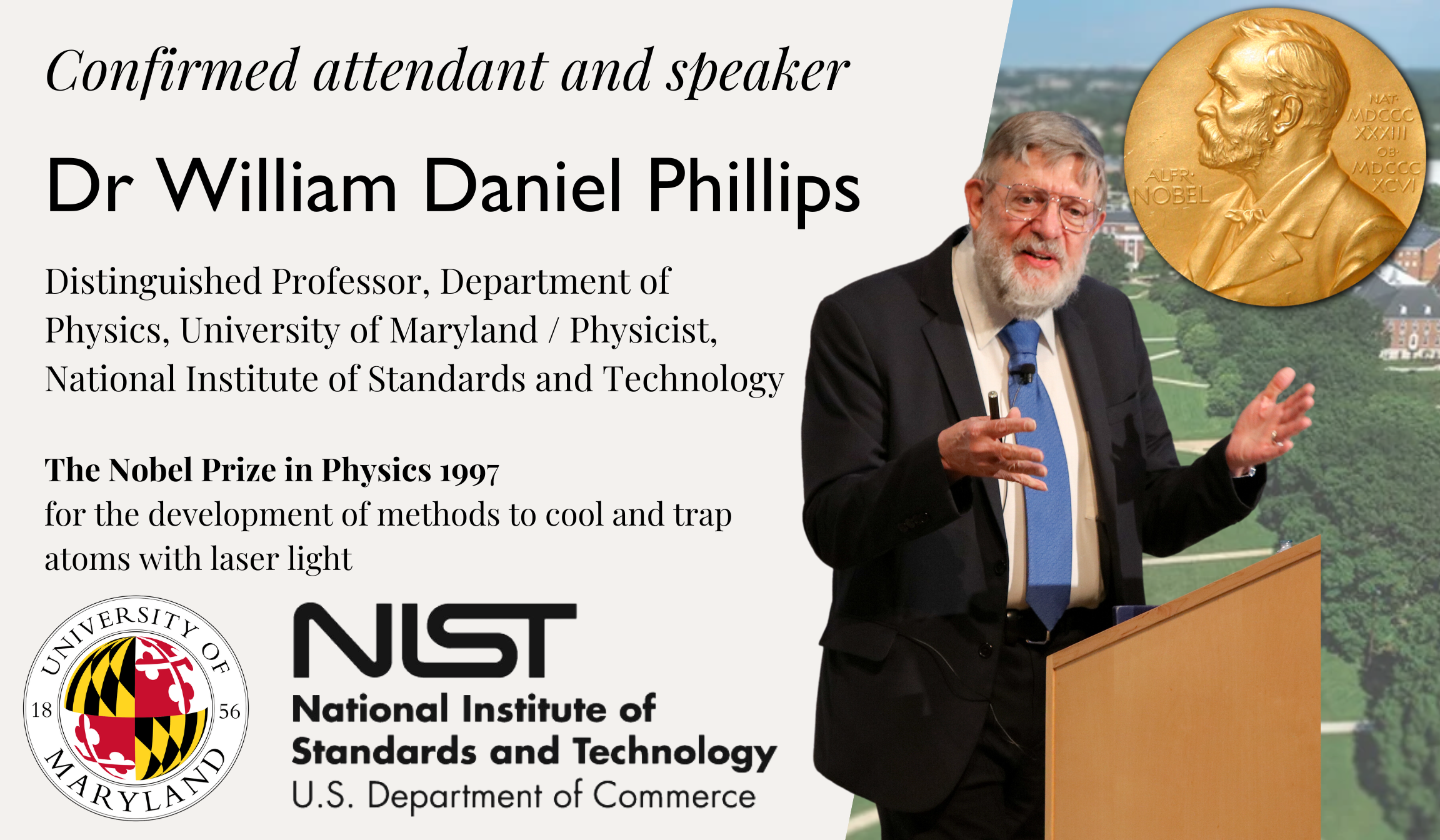
Dr William Daniel Phillips
The Nobel Prize in Physics 1997
For the development of methods to cool and trap atoms with laser light
Biography:
In 1996, Dr William Daniel Phillips received the Albert A. Michelson Medal from The Franklin Institute. His doctoral thesis concerned the magnetic moment of the proton in H2O. He later did some work with Bose–Einstein condensates. In 1997 he won the Nobel Prize in Physics together with Claude Cohen-Tannoudji and Steven Chu for his contributions to laser cooling, a technique to slow the movement of gaseous atoms in order to better study them, at the National Institute of Standards and Technology, and especially for his invention of the Zeeman slower.
Dr Phillips is one of the 20 American recipients of the Nobel Prize in Physics to sign a letter addressed to President George W. Bush in May 2008, urging him to “reverse the damage done to basic science research in the Fiscal Year 2008 Omnibus Appropriations Bill” by requesting additional emergency funding for the Department of Energy’s Office of Science, the National Science Foundation, and the National Institute of Standards and Technology.
He was one of the 35 Nobel laureates who signed a letter urging President Obama to provide a stable $15 billion per year support for clean energy research, technology and demonstration.
He is also one of three well-known scientists and Methodist laity who have involved themselves in the religion and science dialogue. The other two scientists and fellow Methodists are chemist Charles Coulson and 1981 Nobel laureate Arthur Leonard Schawlow.

Dr Aaron Ciechanover
The Nobel Prize in Chemistry 2004
For the discovery of ubiquitin-mediated protein degradation
Biography:
Aaron Ciechanover is one of Israel’s first Nobel Laureates in science, earning his Nobel Prize in 2004 for his work in ubiquitination. He is honored for playing a central role in the history of Israel and in the history of the Technion – Israel Institute of Technology.
Dr Ciechanover is currently a Technion Distinguished Research Professor in the Ruth and Bruce Rappaport Faculty of Medicine and Research Institute at the Technion. He is a member of the Israel Academy of Sciences and Humanities, the Pontifical Academy of Sciences, the National Academy of Sciences of Ukraine, the Russian Academy of Sciences and is a foreign associate of the United States National Academy of Sciences. In 2008, he was a visiting Distinguished Chair Professor at NCKU, Taiwan. As part of Shenzhen’s 13th Five-Year Plan funding research in emerging technologies and opening “Nobel laureate research labs”, in 2018 he opened the Ciechanover Institute of Precision and Regenerative Medicine at the Chinese University of Hong Kong, Shenzhen campus.

Dr Robert Lefkowitz
The Nobel Prize in Chemistry 2012
For the discovery of G protein-coupled receptors
Biography:
Robert Joseph Lefkowitz is an American physician (internist and cardiologist) and biochemist. He is best known for his discoveries that reveal the inner workings of an important family G protein-coupled receptors, for which he was awarded the 2012 Nobel Prize for Chemistry with Brian Kobilka. He is currently an Investigator with the Howard Hughes Medical Institute as well as a James B. Duke Professor of Medicine and Professor of Biochemistry and Chemistry at Duke University.
Dr Lefkowitz made a remarkable contribution in the mid-1980s when he and his colleagues cloned the gene first for the β-adrenergic receptor, and then rapidly thereafter, for a total of 8 adrenergic receptors (receptors for adrenaline and noradrenaline). This led to the seminal discovery that all GPCRs (which include the β-adrenergic receptor) have a very similar molecular structure. The structure is defined by an amino acid sequence which weaves its way back and forth across the plasma membrane seven times. Today we know that about 1,000 receptors in the human body belong to this same family. The importance of this is that all of these receptors use the same basic mechanisms so that pharmaceutical researchers now understand how to effectively target the largest receptor family in the human body. Today, as many as 30 to 50 percent of all prescription drugs are designed to “fit” like keys into the similarly structured locks of Dr Lefkowitz’ receptors—everything from anti-histamines to ulcer drugs to beta blockers that help relieve hypertension, angina and coronary disease.
Dr Lefkowitz is among the most highly cited researchers in the fields of biology, biochemistry, pharmacology, toxicology, and clinical medicine according to Thomson-ISI.

Dr Joachim Frank
The Nobel Prize in Chemistry 2017
For developing cryo-electron microscopy
Biography:
Joachim Frank is a German-American biophysicist at Columbia University and a Nobel laureate. He is regarded as the founder of single-particle cryo-electron microscopy (cryo-EM), for which he shared the Nobel Prize in Chemistry in 2017 with Jacques Dubochet and Richard Henderson. He also made significant contributions to structure and function of the ribosome from bacteria and eukaryotes.
In 1975, Dr Frank was offered a position of senior research scientist in the Division of Laboratories and Research (now Wadsworth Center), New York State Department of Health,where he started working on single-particle approaches in electron microscopy. In 1985 he was appointed associate and then (1986) full professor at the newly formed Department of Biomedical Sciences of the University at Albany, State University of New York. In 1987 and 1994, he went on sabbaticals in Europe, one to work with Richard Henderson, Laboratory of Molecular Biology Medical Research Council in Cambridge and the other as a Humboldt Research Award winner with Kenneth C. Holmes, Max Planck Institute for Medical Research in Heidelberg. In 1998, Dr Frank was appointed investigator of the Howard Hughes Medical Institute (HHMI). Since 2003 he was also lecturer at Columbia University, and he joined Columbia University in 2008 as professor of Biochemistry and Molecular Biophysics and of biological sciences.

Dr Barry C. Barish
The Nobel Prize in Physics 2017
For the decisive contributions to the detection of gravitational waves
Biography:
Dr Barry Clark Barish is an American experimental physicist and Nobel Laureate. He is a Linde Professor of Physics, emeritus at California Institute of Technology and a leading expert on gravitational waves.
In 2017, Barish was awarded the Nobel Prize in Physics along with Rainer Weiss and Kip Thorne “for decisive contributions to the LIGO detector and the observation of gravitational waves”. He said, “I didn’t know if I would succeed. I was afraid I would fail, but because I tried, I had a breakthrough.”
In 2018, he joined the faculty at University of California, Riverside, becoming the university’s second Nobel Prize winner on the faculty.
In the fall of 2023, he joined Stony Brook University as the inaugural President’s Distinguished Endowed Chair in Physics.
In 2023, Dr Barish was awarded the National Medal of Science by President Biden in a White House ceremony.

Dr Harvey J. Alter
The Nobel Prize in Medicine 2020
For the discovery of Hepatitis C virus
Biography:
Dr Harvey J. Alter is an American medical researcher, virologist, physician and Nobel Prize laureate, who is best known for his work that led to the discovery of the hepatitis C virus. Alter is the former chief of the infectious disease section and the associate director for research of the Department of Transfusion Medicine at the Warren Grant Magnuson Clinical Center in the National Institutes of Health (NIH) in Bethesda, Maryland. In the mid-1970s, Alter and his research team demonstrated that most post-transfusion hepatitis cases were not due to hepatitis A or hepatitis B viruses. Working independently, Alter and Edward Tabor, a scientist at the U.S. Food and Drug Administration, proved through transmission studies in chimpanzees that a new form of hepatitis, initially called “non-A, non-B hepatitis” caused the infections, and that the causative agent was probably a virus. This work eventually led to the discovery of the hepatitis C virus in 1988, for which he shared the Nobel Prize in Physiology or Medicine in 2020 along with Michael Houghton and Charles M. Rice.
Dr Alter has received recognition for the research leading to the discovery of the virus that causes hepatitis C. He was awarded the Distinguished Service Medal, the highest award conferred to civilians in United States government public health service, and the 2000 Albert Lasker Award for Clinical Medical Research.

Dr Ardem Patapoutian
The Nobel Prize in Medicine 2021
For discovering how pressure is translated into nerve impulses
Biography:
Dr Ardem Patapoutian is an Lebanese-American molecular biologist, neuroscientist, and Nobel Prize laureate of Armenian descent. He is known for his work in characterising the PIEZO1, PIEZO2, and TRPM8 receptors that detect pressure, menthol, and temperature. Dr Patapoutian is a neuroscience professor and Howard Hughes Medical Institute investigator at Scripps Research in La Jolla, California. In 2021, he won the Nobel Prize in Physiology or Medicine jointly with David Julius.
Frequently Asked Questions
Why should I participate in the Re:think essay competition?
The Re:think Essay competition is meant to serve as fertile ground for honing writing skills, fostering critical thinking, and refining communication abilities. Winning or participating in reputable contests can lead to recognition, awards, scholarships, or even publication opportunities, elevating your academic profile for college applications and future endeavours. Moreover, these competitions facilitate intellectual growth by encouraging exploration of diverse topics, while also providing networking opportunities and exposure to peers, educators, and professionals. Beyond accolades, they instil confidence, prepare for higher education demands, and often allow you to contribute meaningfully to societal conversations or causes, making an impact with your ideas.
Who is eligible to enter the Re:think essay competition?
As long as you’re currently attending high school, regardless of your location or background, you’re eligible to participate. We welcome students from diverse educational settings worldwide to contribute their unique perspectives to the competition.
Is there any entry fee for the competition?
There is no entry fee for the competition. Waiving the entry fee for our essay competition demonstrates CCIR’s dedication to equity. CCIR believes everyone should have an equal chance to participate and showcase their talents, regardless of financial circumstances. Removing this barrier ensures a diverse pool of participants and emphasises merit and creativity over economic capacity, fostering a fair and inclusive environment for all contributors.
Subscribe for Competition Updates
If you are interested to receive latest information and updates of this year’s competition, please sign up here.